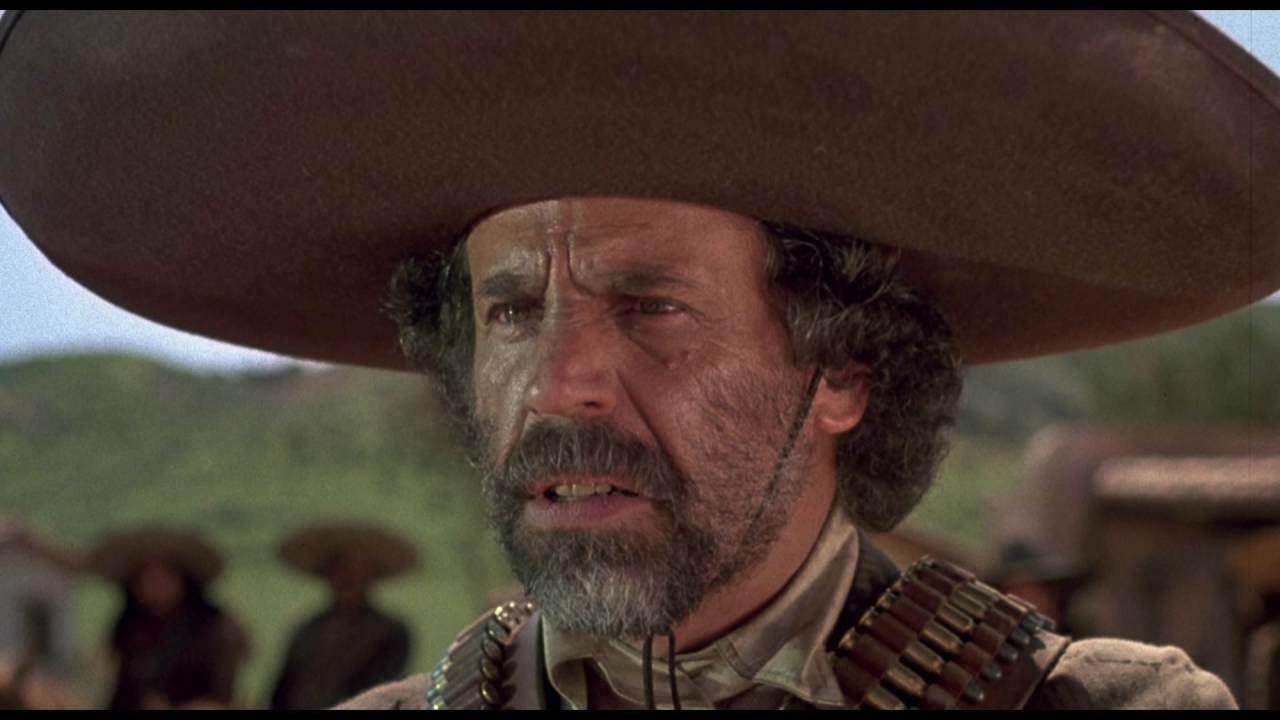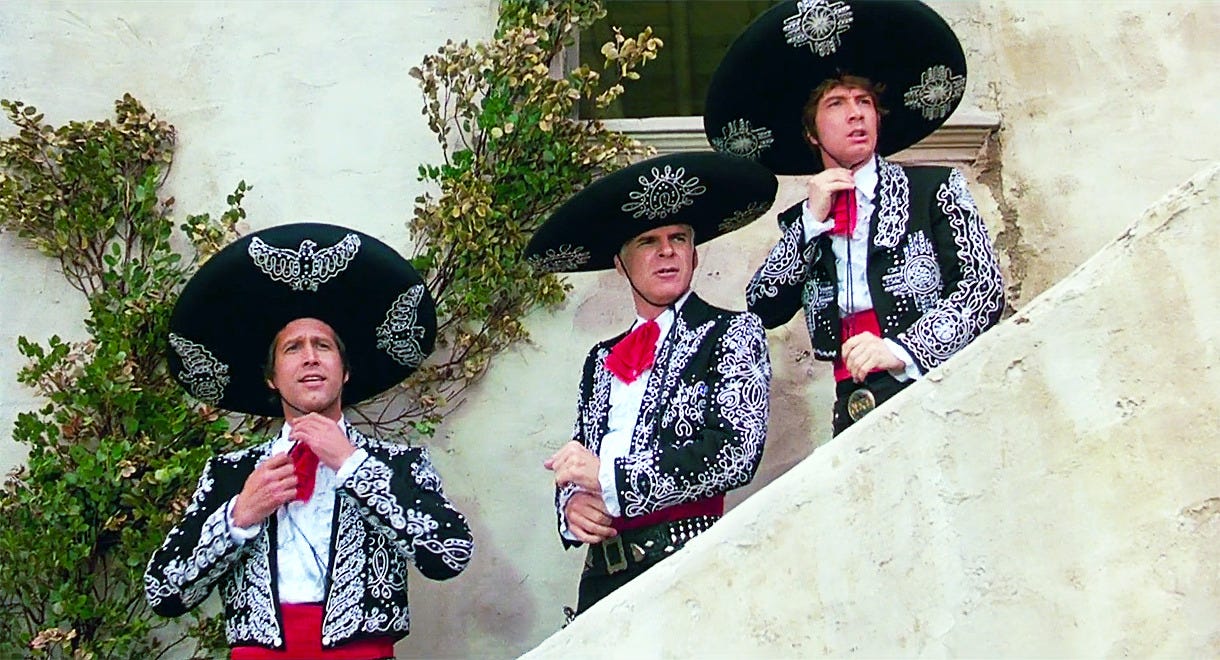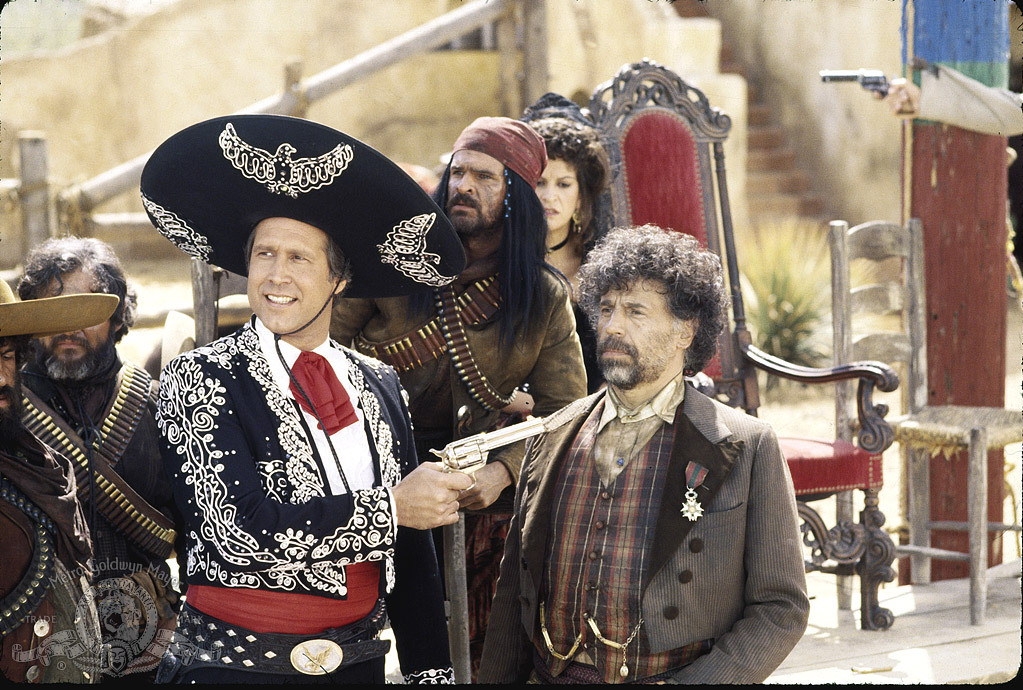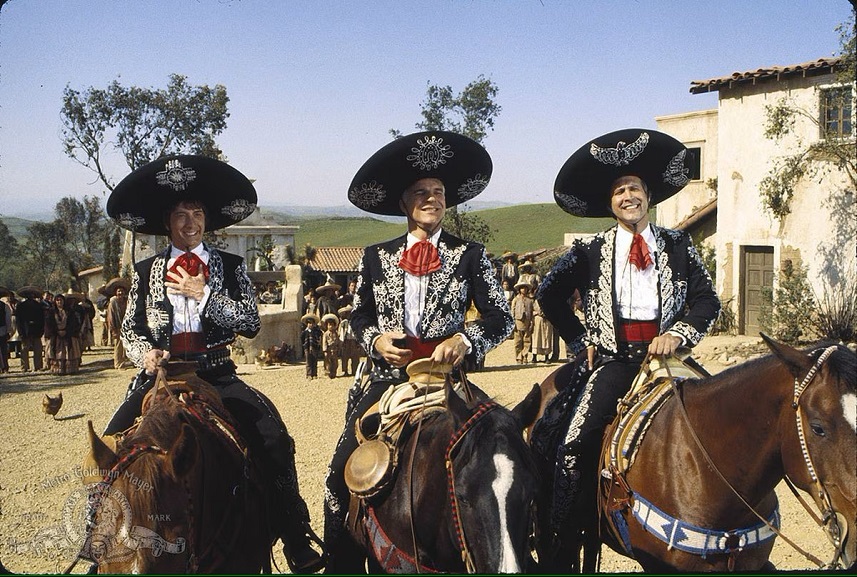/cloudfront-eu-central-1.images.arcpublishing.com/prisa/5C7OPV66QJGH5HWY4ZQ46METBI.jpg)
“Three Amigos!” is not just a comedy film; it’s a masterclass in the art of satire and parody. Released in 1986 and starring the incomparable comedic talents of Steve Martin, Chevy Chase, and Martin Short, the film plays with and pokes fun at Hollywood’s traditional portrayal of Westerns.
While taking a comedic approach, it subtly introduces audiences to the concepts of satire and parody, tools that have been used for centuries to critique and mock societal norms and narratives. In this article, we’ll delve deep into how “Three Amigos!” uses these tools to both entertain and enlighten.
The Roots of Parody
Western films, with their rugged heroes, iconic showdowns, and dramatic desert landscapes, have long held a special place in the history of cinema. From early silent films to the epic narratives of the mid-20th century, the Western genre has evolved, but certain tropes and themes have remained consistent. These include the lone hero, the damsel in distress, the cruel villain, and the climactic shootout.
“Three Amigos!”, with its blend of comedy and critique, positions itself squarely against these classic Westerns. By doing so, it invites viewers to both laugh at and question the genre’s often simplistic and formulaic narratives.
Deconstructing the Heroic Cowboy
In the vast landscape of cinema, the “Three Amigos” – Lucky Day, Dusty Bottoms, and Ned Nederlander – have secured their place on the top list of most popular trios. Yet, what sets them apart is their deliberate departure from the archetype of the traditional Western hero. Instead of being skilled, fearless, and infallible, our trio is comically inept, often clueless, and entirely out of their depth.
This juxtaposition is central to the film’s humor. Whereas classic Western heroes like John Wayne’s characters embody competence and heroism, the Amigos provide a humorous contrast by bumbling their way through challenges, consistently mistaking reel life for real life.
Hollywood’s Influence and Stereotypes

Hollywood has long been critiqued for its often narrow and stereotypical portrayal of cultures, and the Mexican backdrop of “Three Amigos!” provides ample fodder for satire.
The film delves into these portrayals, critiquing how Hollywood often reduces complex societies into one-dimensional caricatures. One of the film’s primary antagonists, El Guapo, exemplifies this. He is a parody of the classic Western villain – cruel, cunning, and larger-than-life.
Yet, the film uses him not just as a source of conflict but as a lens through which to satirize and question Hollywood’s often limited understanding of Mexican culture and its reductionist approach to character development.
The Role of Music in Satire
Music, when used effectively, can enhance a film’s narrative, mood, and message. “Three Amigos!” leverages its musical sequences not just for entertainment, but also as a tool for satire.
Take the song “My Little Buttercup” as a prime example. Instead of a heartfelt ballad in a saloon – a familiar scene in many Westerns – we witness a comedic performance in a Mexican cantina, with the Amigos using their out-of-place charm to navigate a potentially dangerous situation.
The title song of the film, too, presents the trio in all their vaudevillian glory, once again playing with Hollywood’s tendency to romanticize and glamorize the Wild West. Through these musical moments, “Three Amigos!” parodies not just the Western genre but also the larger Hollywood machine that often prioritizes spectacle over authenticity.
The Mockery of Cinematic Tropes

One of the undeniable strengths of “Three Amigos!” is its ability to play with and mock established cinematic conventions, turning them on their head for comedic effect. The “singing bush” and the “invisible swordsman” sequences are emblematic of this approach.
Both scenes start with the promise of mystical, mythical elements – tropes not uncommon in adventure films. However, they swiftly devolve into comedic chaos, subverting audience expectations and poking fun at the predictability of traditional plot devices.
Similarly, the final showdown in the film, instead of a tense and dramatic confrontation, becomes a stage for theatricality and comedic misdirection. By exaggerating and playing with these tropes, “Three Amigos!” not only entertains but also subtly critiques the often formulaic nature of cinema.
The Commercialization of Heroism
In the age of Hollywood, where celebrity culture reigns supreme, the lines between fiction and reality can often blur. “Three Amigos!” cleverly comments on this phenomenon by thrusting its protagonist actors into a world where they are mistaken for the very heroes they portray on screen.
This comedic setup is more than just a plot device; it serves as a poignant commentary on the dangers of celebrity worship and the misconceptions it can foster. When the townspeople of Santo Poco hire the Amigos, thinking they’re genuine heroes, it reflects society’s tendency to equate on-screen bravado with real-life courage.
The film’s finale becomes the crescendo of this theme. Instead of the Amigos single-handedly saving the day in a grand Hollywood fashion, it’s the collective spirit of the townspeople that triumphs. Their brave stand against El Guapo and his gang underscores the idea that true heroism isn’t always found in scripted tales of valiance but in the genuine actions of everyday people.
It serves as a subtle jab at the artificiality of Hollywood’s constructed narratives, emphasizing that real-world courage often looks very different from its cinematic counterpart.

Final words
“Three Amigos!” stands as a testament to the power of satire and parody in cinema. Through its humorous deconstruction of Western film tropes, its critique of Hollywood’s penchant for oversimplification, and its exploration of the blurred lines between reel and real heroism, the film manages to both entertain and enlighten. Its lasting impact lies not just in its comedic sequences but in the thought-provoking commentary that underscores its narrative.
Today, in an age where media influence is pervasive, the film’s themes remain strikingly relevant. It reminds us to question the stories we consume, to recognize the distinction between fiction and reality, and to find heroism not just in larger-than-life characters but in the genuine actions of individuals around us.
In sum, “Three Amigos!” is more than just a comedy; it’s a mirror held up to Hollywood and, by extension, to its audience. It invites us to laugh, yes, but also to reflect – a combination that truly sets it apart in the annals of cinematic history.





